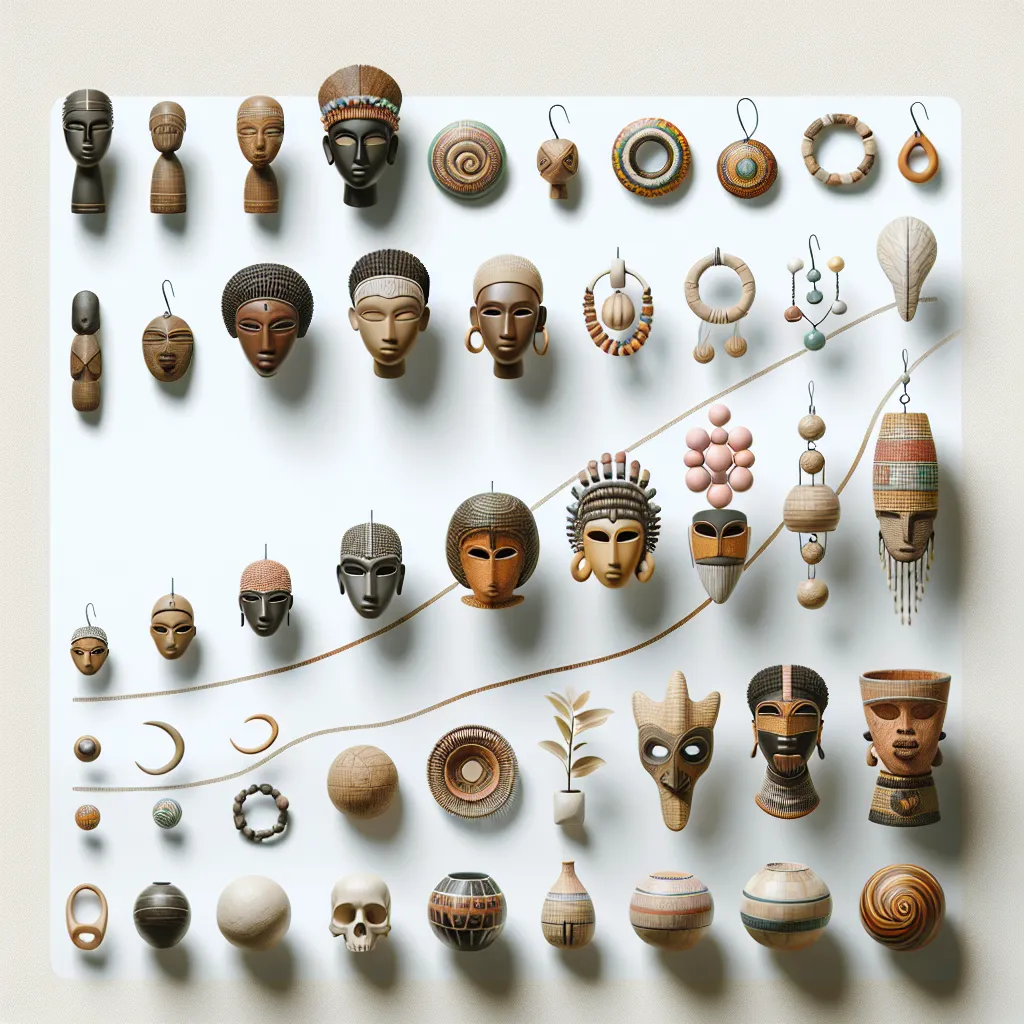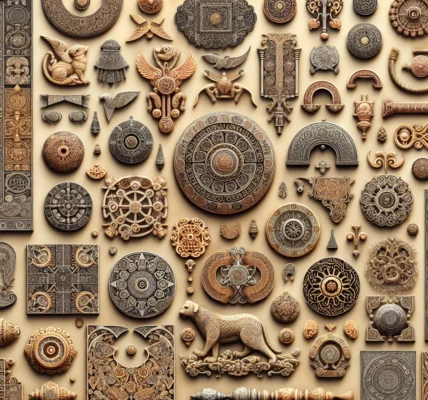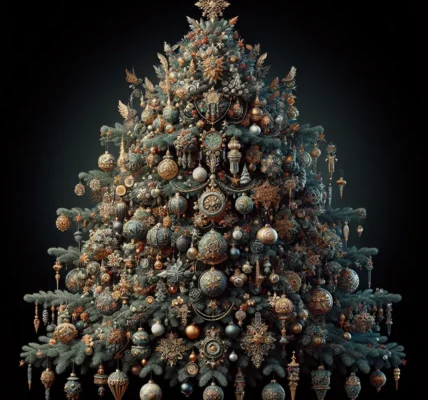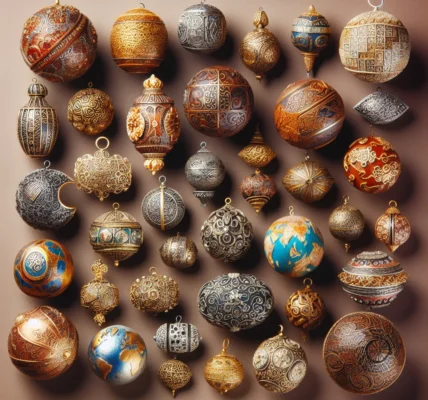The Origins of Ornamentation: Tracing Ancient Traditions
Exploring the History of Ornaments: From Ancient Traditions to Modern Trends
The practice of ornamentation dates back to ancient traditions, serving as a fundamental aspect of human expression and creativity. The origins of ornamentation can be traced back to various ancient civilizations, including the Egyptians, Greeks, and Romans. In ancient Egypt, ornaments were used not only as decorative elements but also held significant symbolic meanings, often associated with religious or spiritual beliefs. The intricate designs and motifs found in Egyptian ornaments reflected their advanced craftsmanship and artistic capabilities.
Similarly, in ancient Greece, ornamentation played a crucial role in architectural and artistic endeavors. Greek ornaments featured geometric patterns, floral motifs, and mythological symbols, showcasing the cultural and mythic narratives of the time. The use of ornaments in Greek architecture, pottery, and sculpture exemplified the integration of art into everyday life.
Furthermore, the Romans were adept at incorporating ornaments into various aspects of their society, including architecture, jewelry, and everyday objects. Roman ornamental designs often featured motifs inspired by nature, such as leaves, vines, and animals, symbolizing vitality and abundance. The meticulous craftsmanship and attention to detail in Roman ornaments reflected their appreciation for beauty and aesthetics.
As we delve into the history of ornamentation, it becomes evident that ancient traditions heavily influenced the evolution of decorative arts. The intricate patterns, symbols, and motifs from these ancient civilizations continue to inspire modern ornamentation, bridging the gap between the past and the present.
Evolution of Ornamental Styles Through the Ages
Exploring the history of ornaments is a fascinating journey that showcases the evolution of ornamental styles through the ages. From ancient traditions to modern trends, the concept of ornamentation has undergone significant transformations, reflecting the changing cultural, social, and artistic landscape.
The earliest evidence of ornaments dates back to ancient civilizations such as the Egyptians, Greeks, and Romans, where ornamental styles were intricately linked to religious beliefs, mythology, and the natural world. These early ornaments often featured symbols of deities, animals, and geometric patterns, serving as a means of self-expression and cultural identity.
As the world entered the medieval period, ornamental styles became heavily influenced by the Byzantine, Romanesque, and Gothic architectural movements. Intricate stone carvings, elaborate tapestries, and ornate metalwork adorned cathedrals, castles, and palaces, reflecting the spiritual and societal values of the time.
The Renaissance era brought about a revival of classical motifs, inspiring ornamental styles that celebrated humanism, scientific advancements, and the beauty of the natural world. Ornamentation in the form of elaborate frescoes, elegant furniture, and detailed marble sculptures became synonymous with the artistic achievements of the period.
Moving into the Baroque and Rococo periods, ornamental styles reached new heights of opulence and extravagance. Intricate floral designs, asymmetrical forms, and lavish ornamentation adorned palaces, creating immersive and theatrical environments that showcased the wealth and power of the aristocracy.
The Industrial Revolution sparked a shift in ornamental styles, as mass production and technological advancements led to the proliferation of ornate decorations in everyday objects and architecture. Art Nouveau, Art Deco, and other modern movements embraced new materials and techniques, giving rise to innovative and futuristic ornamentation that captured the spirit of the changing times.
In the present day, the evolution of ornamental styles continues to be shaped by diverse artistic movements, multicultural influences, and technological innovations. From minimalist and sustainable designs to ornate and eclectic expressions, modern ornamentation reflects the ever-changing tastes and values of contemporary society.
Exploring the history of ornaments unveils a rich tapestry of artistic evolution, cultural symbolism, and human creativity, showcasing the enduring significance of ornamentation in shaping our visual world.
Influential Periods and Cultures in Ornament History
When exploring the history of ornaments, it becomes evident that various periods and cultures have significantly influenced the development and evolution of decorative motifs. One of the most influential periods in ornament history is the ancient Mesopotamian era, where intricate designs adorned jewelry, textiles, and pottery. The use of geometric patterns and natural motifs, such as animals and plants, reflected the close connection between art and everyday life.
Similarly, the ancient Egyptians established a lasting legacy in ornamentation, with their distinctive use of symbolic motifs like the lotus flower, scarabs, and hieroglyphs. These designs were not only decorative but also held deep cultural and religious significance, emphasizing the interweaving of art, spirituality, and daily existence.
Moving forward in history, the Byzantine Empire introduced opulent and lavish ornamentation, characterized by richly ornamented religious objects, mosaics, and architecture. The intricate use of gold, vibrant colors, and religious iconography became emblematic of Byzantine art and left an indelible mark on the development of decorative arts.
Moreover, the influence of Islamic art cannot be overstated in the realm of ornamentation. Islamic ornamentation, notably seen in breathtaking geometric patterns, arabesques, and intricate calligraphy, demonstrated a remarkable fusion of artistic expression and religious ideals. This period significantly shaped the use of ornamentation in architecture, textiles, and everyday objects.
Fast forward to the Renaissance, and we witness a renewed interest in classical motifs and a celebration of humanism and natural beauty. Ornamentation during this period drew inspiration from ancient Roman and Greek designs, incorporating elements such as acanthus leaves, mythological figures, and intricate scrollwork. The revival of classical ornamentation in the Renaissance era left an enduring imprint on Western decorative arts.
As we traverse through history, each period and culture has contributed to the rich tapestry of ornamentation, leaving a profound impact on art, design, and cultural expression. Understanding the influential periods and cultures in ornament history allows us to appreciate the intricate symbolism, aesthetic allure, and historical significance encapsulated within decorative arts.
Contemporary Perspectives: Ornamentation in the Modern World
In contemporary society, ornamentation has taken on new significance, reflecting the evolution of cultural values and design trends. Modern ornamentation is characterized by a fusion of traditional elements with innovative techniques and materials. One of the defining aspects of contemporary ornamentation is its emphasis on individual expression and personalization. From architectural design to fashion and product aesthetics, ornamentation serves as a means of conveying unique narratives and aesthetics.
The modern world has witnessed a revival of interest in traditional ornamentation techniques, such as intricate woodcarving, metalwork, and intricate textile embellishments. Simultaneously, there has been an exploration of new frontiers in ornamentation, driven by advancements in technology and the use of unconventional materials. For example, 3D printing has opened up exciting possibilities for creating intricately detailed ornaments in a range of industries.
Furthermore, the concept of sustainability has greatly influenced modern ornamentation, leading to a growing emphasis on environmentally friendly materials and production processes. This shift towards sustainable ornamentation reflects a broader societal awareness of the ecological impact of design choices.
In the contemporary context, ornamentation serves not only as a decorative element but also as a medium for social and cultural commentary. By integrating elements of ornamentation from diverse cultural traditions, modern design seeks to celebrate global diversity and foster cross-cultural understanding. The utilization of ornamentation as a form of cultural expression has allowed designers and creators to communicate powerful messages and evoke emotional responses.
Overall, contemporary ornamentation embodies a harmonious blend of tradition, innovation, individuality, and cultural consciousness, shaping the visual landscape of the modern world.




